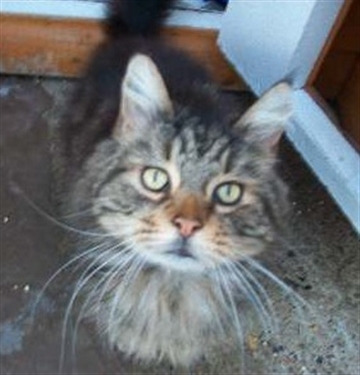Is Aromatherapy Safe For Your Cat?
07 October 2011

CP has
had increasing numbers of queries about complementary therapies for cats by
volunteers and staff, including more recently the use of essential oils with
cats.
It is a
common misconception that all natural products are safe, but this is simply not
the case – some natural products are known to be harmful. The Royal College of
Veterinary Surgeon’s Guide to Professional Conduct states:
“Treatment by acupuncture, aromatherapy, homoeopathy
or other complementary therapy may only be administered by a veterinary surgeon
who should have undergone training in these procedures. At present, it is
illegal for them to be given by practitioners who are not veterinary surgeons.”
Most
conventional licensed drugs themselves, as with essential oils and herbal
treatments, are commonly derived from natural plants, but may have since been
synthetically manufactured or purified and must go through various trials to
ensure their safety and efficacy before they can be used to treat
animals. While herbal treatments and essential oils or other extracts may
well have therapeutic properties, they also have the potential to do
harm. Many websites recommend the use of products in a similar way to
their use in people and this is potentially very dangerous as different species
can react to or process different chemicals in different ways and at different
exposure levels. The use of complementary therapies is regulated in law
and they should not be used in place of conventional therapies in CP cats to
meet the Minimum Veterinary Standards or otherwise. If they are used
additionally in CP cats, this should only be by a suitably trained veterinary
surgeon.
Before
considering any treatment for an animal and particularly when addressing a behavioural
issue or stress, a vet will first consider whether there is not something about
the environment or the management of the animal that can be improved or changed
before resorting to a chemical or drug. Otherwise, the underlying cause
may not be being dealt with. If a chemical treatment is needed, the vet
will need to assess:
- What evidence there is that it will
work? Otherwise, why risk any side effects? Why risk lack of attention to
general environment or management – if the owner perceives there is a
quick-fix chemical instead to manage/hide the signs? Why spend the money
on the chemical?
- What evidence is there that the
chemical is safe for use in that species and in that individual animal,
dependent on its health, concurrent treatments and other concerns?
With specific regard to essential oils, there is a
lack of scientific data on their safety or efficacy in all companion animals
and cats in particular are known to lack certain detoxification pathways
essential for the metabolism of some drugs and chemicals. This makes cats at
particular risk of toxicity following exposure to some chemicals compared with
people and other species. Different oils vary, meaning they may also contain
other toxic compounds – some compounds found in some oils are certainly toxic
to cats. The psychological damage a strong aroma from an essential oil can have
on such a scent-sensitive and scent-dependent species as the cat is also
unknown. The use of essential oils for cats through inhalation, oral
administration or topical administration therefore carries potential risks.
Safe doses of oils administered through the different routes are also unknown.
Treatment by aromatherapy is an act of veterinary surgery, and as mentioned
above, it is illegal for non-veterinary surgeons to give such treatment.
Furthermore, the use of essential oils in liquid pot-pourris – which may also
contain detergents – around cats is also inadvisable – the American SPCA
Poison Control
Center cites numerous
reports of toxic exposure to liquid pot-pourris: www.aspcapro.org/mydocuments/zh-toxbrief_1299.pdf